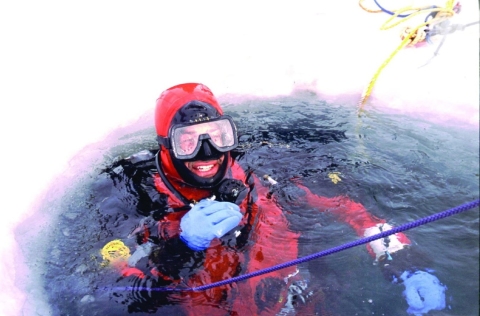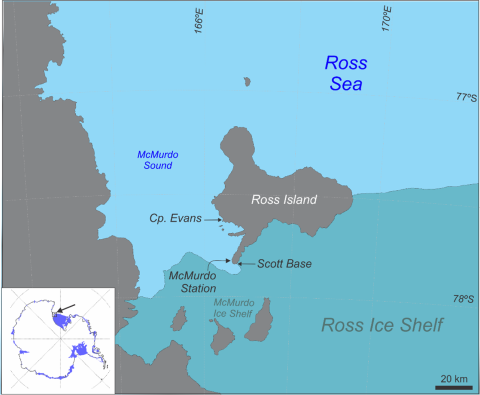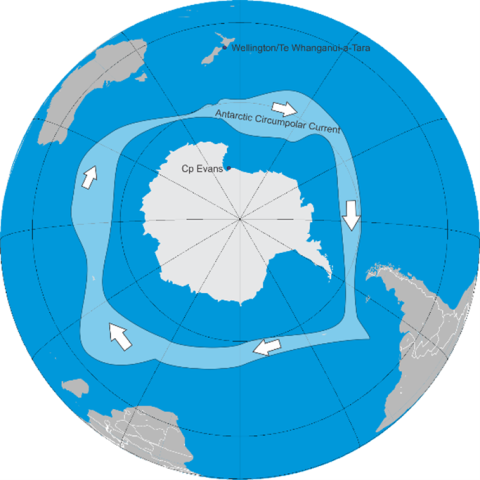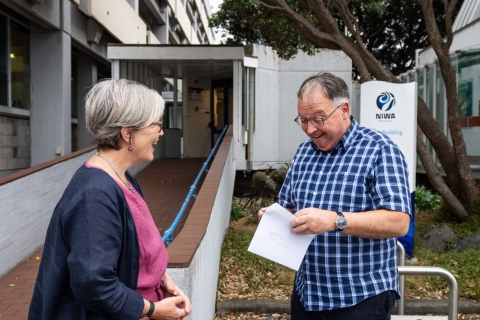In 2016, NIWA technician Rod Budd is doing a routine dive under the Antarctic ice at Cape Evans, studying the creatures that live there. Out of the corner of his eye, he spots something on the seabed.
“The visibility wasn’t great. At first, I thought it was a credit card. I dived down to retrieve it, put it in my pocket, and carried on with my work. It’s not unusual for items to fall under the ice, especially in this part of Antarctica where lots of scientists work, as well as its proximity to Scott’s historic hut, which gets a fair few visitors,” said Rod.

Once back in his cabin, Rod gave the card a wash and saw that it was a security card. Its owner’s name and picture were clearly visible: David McCaw, Radio New Zealand.
“David wasn’t on the expedition with us, so I presumed he’d been down in Antarctica that season and dropped the card at some point. I made a mental note to return it to him once I got back to New Zealand.
“Years later, after several failed attempts to source an email or phone number for David, I told the NIWA comms team about it because I thought it’d made an interesting internal story. Well, I didn’t expect what was coming next.”
Communications Manager Sarah Fraser was the right person for Rod to speak to. Through her contacts, she was able to track down David’s email address, and got in touch with him. When David’s response came through, it made everyone gasp.
“WOOOW!!
Kia ora Sarah
I’m absolutely staggered to see that access card again! I’m not sure I can give you a plausible explanation right now…
In 2003, my car was broken in to and my work briefcase stolen while it was parked over the road from the Michael Fowler Centre. The contents of the briefcase were discarded including the security access card I kept in the bag. A few days later the briefcase was handed in to Wellington Police Station, apparently retrieved by someone from Wellington Harbour. I collected the briefcase, mostly empty, except for a quantity of seawater and some soggy documents!”
How on earth did the card get from Wellington Harbour and all the way to Cape Evans, some 4,000km away? Could it have been carried on the ocean currents?

Probably not, according to NIWA’s Dr Craig Stevens, is a physical oceanographer who has spent many seasons in Antarctica.
“I find it difficult to imagine how it could have got there of its own accord AND turn up in one of the few locations around Antarctica where people regularly go. There is nothing in the ocean currents that plots a direct line from Wellington to Cape Evans.
“A scenario where it could happen involves the card leaving Wellington Harbour, entering the Western Boundary Current towards the North Pacific, moving past Samoa. If the card then (somehow) became more buoyant, it would work its way to the surface by wind mixing and other processes, go through Indonesia, cross the Antarctic Circumpolar Current – the world’s largest – and land in Cape Evans.
“But this would take 1,000 years," he said.

It’s not unheard of for things dropped in the ocean to turn up miraculously somewhere else, with stories of messages in bottles being discovered in all sorts of places. But this one remains a mystery, for now…
Several theories are being put forward as to how the card made this remarkable journey. Did it attach itself to the bottom of a research vessel? Did whoever stole the card work at Wellington’s Port or on a ship? Could it have hitched a ride in the stomach of a whale? Was it aliens?!
Perhaps we’ll never know the answer. But over 20 years later, David was delighted to be reunited with his long-lost card.

